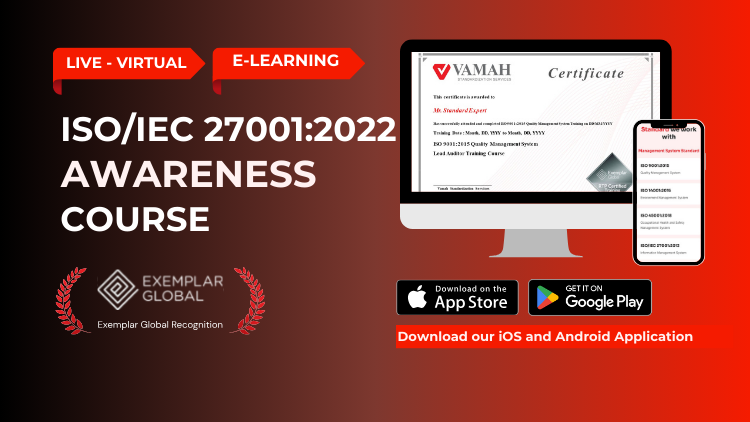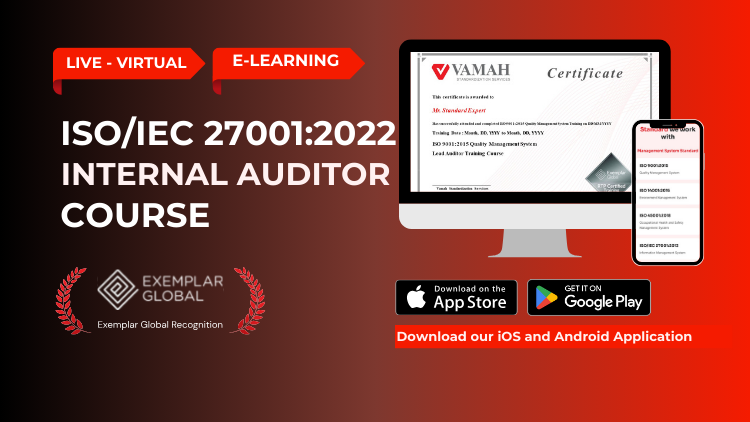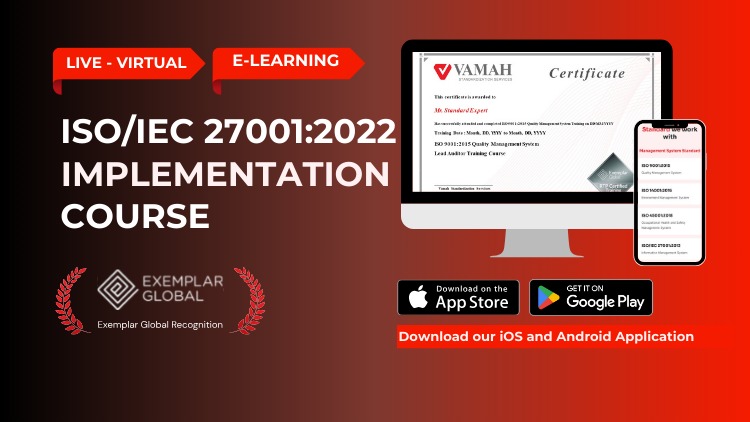ISO 27001:2022
ISO 27001:2022 is the latest international standard for Information Security Management Systems (ISMS). It provides a framework to help organizations protect their information assets systematically and cost-effectively. By adhering to ISO 27001:2022, organizations can manage risks to their information and ensure the confidentiality, integrity, and availability of sensitive data.
Trainings
Our trainings are developed for ISO 27001:2022 with various level such as Awareness, Internal Auditor, Lead Auditor and Implementation.
ISO 27001:2022 Awareness Training
Our Awareness Training introduces participants to the key concepts and importance of ISO 27001:2022.
This course covers the fundamental principles of information security management, the benefits of implementing an ISMS, and the specific requirements of ISO 27001:2022.
It is ideal for employees across all levels who need to understand the basics of information security and their role in maintaining it.

ISO 27001:2022 Internal Auditor Training
Our Internal Auditor Training is designed for individuals responsible for conducting internal audits of their organization's ISMS.
This course provides comprehensive knowledge on planning, executing, reporting, and following up on audits.
Participants will learn to evaluate the effectiveness of their ISMS, identify areas for improvement, and ensure ongoing compliance with ISO 27001:2022.

ISO 27001:2022 Lead Auditor Training
Our Lead Auditor Training is aimed at professionals seeking to become certified lead auditors for ISO 27001:2022.
This advanced course covers detailed auditing techniques, audit planning, execution, and the principles of ISO 19011 (the international standard for auditing management systems).
Participants will gain the expertise needed to lead audits effectively and drive improvements in information security management.

ISO 27001:2022 Implementation Training
Our Implementation Workshop provides hands-on guidance for organizations in the process of implementing ISO 27001:2022.
This workshop covers the development of essential documentation, including information security policies, procedures, and risk management plans.
Participants will learn how to integrate ISO 27001 requirements into their existing processes and ensure a successful transition to a certified ISMS.

DIY Templates
- Cost-Effective: Save on consultancy fees.
- Time-Saving: Ready-made documents for quick implementation.
- Comprehensive: Includes all necessary documents.
- Customizable: Easily adapt to your organization’s needs.
- Expertly Crafted: Developed by industry professionals.
- Streamlined Process: Clear instructions reduce the learning curve for team members.
Implement ISO 27001:2022 with DIY Templates
Vamah Standardization Services LLP offers a range of ISO 27001:2022 DIY templates to facilitate the implementation of an Information Security Management System (ISMS). These pre-prepared documents simplify the process of achieving ISO 27001:2022 certification and are designed to be cost-effective and efficient.
ISO 27001:2022 Consultancy
At VamahSS, we assist organizations in navigating the complexities of ISO standards implementation, certification, and continual improvement. Recognizing that every organization is unique, we provide tailored solutions to fit specific needs, making us your trusted partner in achieving ISO certification. Whether starting your ISO journey or optimizing existing processes, our consultancy services are designed to meet your objectives.We offer remote ISO consultancy services for various management system standards and accreditation standards. Choose between our two consulting options: online workshops or full project support tailored to your requirements. Contact us today to start your path to ISO certification.
Contact Us
Information Security Management System
ISO 27001:2022 is a global standard that specifies the requirements for establishing, implementing, maintaining, and continually improving an Information Security Management System (ISMS). This guide provides a comprehensive overview of ISO 27001, its importance, implementation process, and business impact.
What is ISO 27001:2022?
Why is ISO 27001:2022 Important?
ISO 27001 is a crucial standard for organizations looking to manage and protect their information security effectively. Here’s why it’s important:
-1.png?width=808&height=197&name=vamah(1)-1.png)